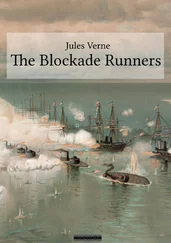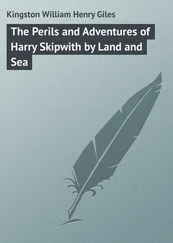1 ...6 7 8 10 11 12 ...22 “Well,” said the doctor, “that serves to confirm those who seek a Northwest Passage. The current moves at the rate of about five miles an hour, and it is hard to imagine that it rises at the bottom of a gulf.”
“That is very likely. Doctor,” answered Shandon, “because, while this current flows from north to south, there is a contrary current in Behring Strait, which flows from south to north, and which must be the cause of this one.”
“Hence,” said the doctor, “you must admit that America is completely separated from the polar regions, and that the water from the Pacific skirts its whole northern coast, until it reaches the Atlantic. Besides, the greater elevation of the water of the Pacific is another reason for its flowing towards the European seas.”
“But,” said Shandon, “there must be some facts which support this theory; and if there are,” he added with gentle irony, “our learned friend must be familiar with them.”
“Well,” answered the latter, complacently, “if it interests you at all I can tell you that whales, wounded in Davis Strait, have been found afterwards on the coast of Tartary, still carrying a European harpoon in their side.”
“And unless they doubled Cape Horn, or the Cape of Good Hope,” answered Shandon, “they must have gone around the northern coast of America. There can be no doubt of that, Doctor.”
“And if you were not convinced, my dear Shandon,” said the doctor, smiling, “I could produce still other evidence, such as the floating wood with which Davis Strait is filled, larch, aspen, and other southern kinds. Now we know that the Gulf Stream could not carry them into the strait; and if they come out from it they must have got in through Behring Strait.”
“I am perfectly convinced, Doctor, and I must say it would be hard to maintain the other side against you.”
“See there,” said Johnson, “there's something that will throw light on this discussion. It's a large piece of wood floating on the water; if the commander will give us leave, we can put a rope about it, hoist it on board, and ask it the name of its country.”
“That's the way!” said the doctor; “after the rule we have the example.”
Shandon gave the necessary orders; the brig was turned towards the piece of wood, and soon the crew were hoisting it aboard, although not without considerable trouble.
It was the trunk of a mahogany-tree, eaten to its centre by worms, which fact alone made it light enough to float.
“This is a real triumph,” exclaimed the doctor, enthusiastically, “for, since the Atlantic currents could not have brought it into Davis Strait, since it could not have reached the polar waters from the rivers of North America, as the tree grows under the equator, it is evident that it must have come direct from Behring Strait. And besides, see those sea-worms which have eaten it; they belong to warm latitudes.”
“It certainly gives the lie to those who deny the existence of a Northwest Passage.”
“It fairly kills them,” answered the doctor. “See here, I'll give you the route of this mahogany-tree: it was carried to the Pacific Ocean by some river of the Isthmus of Panama or of Guatemala; thence the current carried it along the coast of America as far as Behring Strait, and so it was forced into the polar waters; it is neither so old nor so completely water-logged that we cannot set its departure at some recent date; it escaped all the obstacles of the many straits coming into Baffin's Bay, and being quickly seized by the arctic current it came through Davis Strait to be hoisted on board the Forward for the great joy of Dr. Clawbonny, who asks the commander's permission to keep a piece as a memorial.”
“Of course,” answered Shandon; “but let me tell you in my turn that you will not be the only possessor of such a waif. The Danish governor of the island of Disco—”
“On the coast of Greenland,” continued the doctor, “has a mahogany table, made from a tree found in the same way; I know it, my dear Shandon. Very well; I don't grudge him his table, for if there were room enough on board, I could easily make a sleeping-room out of this.”
On the night of Wednesday the wind blew with extreme violence; drift-wood was frequently seen; the approach to the coast became more dangerous at a time when icebergs are numerous; hence the commander ordered sail to be shortened, and the Forward went on under merely her foresail and forestay-sail.
The thermometer fell below the freezing-point. Shandon distributed among the crew suitable clothing, woollen trousers and jackets, flannel shirts, and thick woollen stockings, such as are worn by Norwegian peasants. Every man received in addition a pair of water-proof boots.
As for Captain, he seemed contented with his fur; he appeared indifferent to the changes of temperature, as if he were thoroughly accustomed to such a life; and besides, a Danish dog was unlikely to be very tender. The men seldom laid eyes on him, for he generally kept himself concealed in the darkest parts of the vessel.
Towards evening, through a rift in the fog, the coast of Greenland longitude 37°2'7". Through his glass the doctor was able to distinguish mountains separated by huge glaciers; but the fog soon cut out this view, like the curtain of a theatre falling at the most interesting part of a play.
On the morning of the 20th of April, the Forward found itself in sight of an iceberg one hundred and fifty feet high, aground in this place from time immemorial; the thaws have had no effect upon it, and leave its strange shape unaltered. Snow saw it; in 1829 James Ross took an exact drawing of it; and in 1851 the French lieutenant, Bellot, on board of the Prince Albert , observed it. Naturally the doctor wanted to preserve a memorial of the famous mountain, and he made a very successful sketch of it.
It is not strange that such masses should run aground, and in consequence become immovably fixed to the spot; as for every foot above the surface of the water they have nearly two beneath, which would give to this one a total height of about four hundred feet.
At last with a temperature at noon as low as 12°, under a snowy, misty sky, they sighted Cape Farewell. The Forward arrived at the appointed day; the unknown captain, if he cared to assume his place in such gloomy weather, would have no need to complain.
“Then,” said the doctor to himself, “there is this famous cape, with its appropriate name! Many have passed it, as we do, who were destined never to see it again! Is it an eternal farewell to one's friends in Europe You have all passed it, Frobisher, Knight, Barlow, Vaughan, Scroggs, Barentz, Hudson, Blosseville, Franklin, Crozier, Bellot, destined never to return home; and for you this cape was well named Cape Farewell!”
It was towards the year 970 that voyagers, setting out from Iceland, discovered Greenland. Sebastian Cabot, in 1498, went as high as latitude 56°; Gaspard and Michel Cotréal, from 1500 to 1502, reached latitude 60°; and in 1576 Martin Frobisher reached the inlet which bears his name.
To John Davis belongs the honor of having discovered the strait, in 1585; and two years later in a third voyage this hardy sailor, this great whaler, reached the sixty-third parallel, twenty-seven degrees from the Pole.
Barentz in 1596, Weymouth in 1602, James Hall in, 1605 and 1607, Hudson, whose name was given to the large bay which runs so far back into the continent of America, James Poole in 1611, went more or less far into the straits, seeking the North-west Passage, the discovery of which would have greatly shortened the route between the two worlds.
Baffin, in 1616, found in the bay of that name Lancaster Sound; he was followed in 1619 by James Monk, and in 1719 by Knight, Barlow, Vaughan, and Scroggs, who were never heard of again.
Читать дальше












